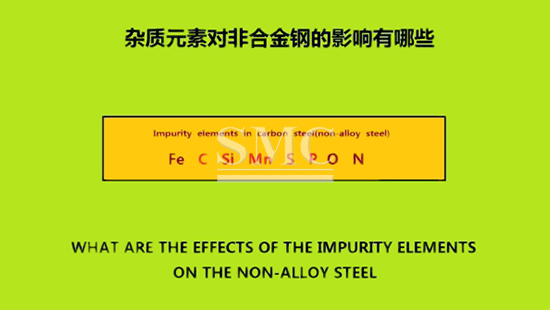
- Company overview The heart of SMC Vision & Philsophy Partnership Certifications Company culture
- Our service Design and Engineering Maintenance and Service Examine Production Line Upgrade and Transformation Storage and Logistics Processing, Trading and Distributor
- Management Our history Global responsibility Info Center
- Procurement center Internship
- Metal Steel Products Stainless Steel Products Aluminum Products Copper Products Galvanized Steel and PPGI Special Alloy Building Material
- Containers ISO Standard Container Equipment Container Storage Container Refrigerated/Reefer Container Offshore Container Container House Tank Container Container Fittings Container Trailer
- Gas Cylinder & Fire Extinguisher Cryogenic Liquid Cylinder Oxygen Gas Cylinder Storage Tank CNG Gas Cylinder LPG Gas Cylinder Hydrogen Gas Cylinder Nitrogen Gas Cylinder Industry Gas Cylinder Fire Extinguisher
- Metal Machinery Forming Machine Cutting Machine Processing Machine Bending Machine Block Machine Other Machinery Motor Spare Parts
- Mechanical Products Miscellany Mooring Equipment Marine Equipment Vehicle Industry Pressure Vessel Conveyor Belt Laser Equipment Bearing
- Electrical System Power Distribution Automation Electrical Cable Solar Power System Electric Protection System Transformer Production Line Lighting System
- Project Plastic Pipes and Pipe Fittings Fiberglass Reinforced Plastic Pontoon System
What are the Effects of Impurity Elements on the Properties of Non-alloyed Steel?
The elements in steel are not added intentionally, regardless of their content, they are all impurity elements. If Mn exists as an impurity element, the highest mass fraction can reach 1.2%. All elements in steel are added artificially and purposefully, regardless of their content, they are alloying elements. When B is used as an alloy element, its mass fraction is generally less than 0.004%.
Non-alloy steel refers to an iron-carbon alloy with a mass fraction of carbon of 0.0218 to 2.11%, commonly known as carbon steel, referred to as carbon steel. The output of non-alloy steel accounts for about 80% of the total steel output. In addition to C and Fe, this steel also contains a small amount of unintentionally added impurity elements such as Mn, Si, S, P, O, N, etc. What is the impact of non-alloyed steel properties?

When manganese exists as an impurity in steel, its mass fraction is generally less than 0.8%, and sometimes it may reach 1.2%. Manganese comes from pig iron and deoxidizer (ferromanganese) which are used as raw materials for steelmaking. In the steelmaking process, manganese is a good deoxidizer and desulfurizer. It has strong deoxidation ability. Manganese and sulfide can synthesize MnS, which can eliminate the harmful effects of sulfur. Most of these reaction products enter the slag and are removed. A small part remains in the steel and becomes non-metallic inclusions. At room temperature, most of manganese is soluble in ferrite, which has a certain solid solution strengthening effect on steel. Therefore, manganese is a beneficial element in non-alloyed steels, but when it is present as a long-lasting element in a small amount, it has no significant effect on the performance of the steel.
When silicon exists as a magazine in steel, its mass fraction is generally less than 0.4%. It also originates from pig iron and deoxidizer (ferrosilicon). At room temperature, silicon dissolves in the ferrite to strengthen the solid solution, which increases the strength, hardness, and elastic limit of hot rolled steel, but reduces its plasticity and toughness. Expensive deoxidation is stronger than manganese, which can eliminate the harmful effect of FeO inclusions on steel. Therefore, expensive is also a beneficial element in non-alloyed steels, but when it is present as a long-lasting element in a small amount, it does not affect the performance of the steel significantly.
Sulfur is an impurity carried into steel by pig iron and fuel. In the solid state, the solubility of sulfur in iron is very small, and it mainly exists in steel in the form of FeS. Due to the poor plasticity of FeS, the brittleness of steel with more sulfur is greater. In addition, FeS and Fe can form a eutectic (FeS + Fe) with a low melting point (985 ° C), which is distributed on the austenite boundary. When the steel is heated to 1000 ~ 1200 ℃ for hot pressure processing, the eutectic with a low melting point has been melted, and the intergranular bond is destroyed, which causes the steel to crack along the grain boundary during processing. This phenomenon is often referred to as the heat brittle.
Sulfur is a harmful element and it is necessary to increase the manganese content in the steel. Mn and S preferentially form a high-melting MnS (1620 ° C), which is distributed in the grains in a granular form. It has a certain degree of plasticity at high temperatures and avoids hot brittleness. Sulfur also has a bad influence on the weldability of steel. It not only causes hot cracks in cold wind, but also easily generates SO2 gas during the welding process, which causes porosity and porosity in the weld. Therefore, in general, sulfur is a harmful element, and its content must be strictly limited in steel, and the mass fraction of sulfur is generally required to be less than 0.05%. However, steel with more sulfur content can form more MnS. In cutting processing, MnS can play the role of chip breaking and improve the machinability of the port, which is a beneficial side of sulfur.
Phosphorus is brought into the steel from pig iron. Under normal circumstances, all phosphorus in steel can be dissolved in ferrite. Phosphorus has a strong solid solution strengthening effect, but the strength and hardness of steel increases, and the plastic toughness decreases significantly. This embrittlement phenomenon is more serious at low temperatures, so it is called cold embrittlement. Cold brittleness is severely harmful to high-cold areas and other structural parts working at low temperatures. It is generally desirable to change the cold brittleness temperature to the working temperature of the workpiece to avoid cold brittleness. Phosphorus is prone to local segregation during the crystallization process, which makes the local phosphorus content higher, which leads to an increase in cold-brittle transition temperature, which is prone to cold-brittleness. In addition, the segregation of phosphorus also causes the steel to form a band structure after hot rolling.
Therefore, phosphorus is a harmful impurity element, and its content must be strictly controlled in steel. Generally, the mass fraction of phosphorus in steel is required to be less than 0.045%. However, when the phosphorus content is large, the brittleness is large, which is advantageous in manufacturing cannonball steel and improving the workability of the steel. In addition, phosphorus can also improve the corrosion resistance of steel in the atmosphere, especially when the steel also contains copper.
Nitrogen is absorbed by the steel in contact with air during the smelting process, which has an adverse effect on the quality of the steel. The solubility of nitrogen in ferrite at room temperature is very low, and supersaturated N in steel will precipitate as Fe2N and Fe4N during normal temperature storage, but the steel will become brittle and become effective embrittlement. Adding Ti, V, Al and other elements to the steel can fix nitrogen in the nitride, thereby eliminating the aging tendency.
Oxygen is also absorbed by the steel in contact with air during the smelting process, which also has an adverse effect on the quality of the steel. Oxygen mainly exists in the form of oxide inclusions in steel. The binding force of oxide inclusions to the substrate is weak, it is not easy to deform, and it is easy to become a source of fatigue cracks.
Hydrogen is also absorbed by the steel in contact with air during the smelting process, which has a greater impact on the quality of the steel and is more harmful, mainly manifested by hydrogen embrittlement. The solubility of hydrogen in steel is very low at room temperature, and atomic supersaturated hydrogen will reduce the toughness of the port and cause hydrogen embrittlement. When hydrogen is precipitated in the molecular state at the time of the defect, a high internal pressure will be generated and micro-cracks will be formed. This will seriously affect the mechanical properties of the steel. It is because steel is brittle and it is not allowed. Such cracks appear as capillary cracks after being corroded on the macro-section of the cross section, so they are also called cracks. In the longitudinal section, the crack appears as an approximately round or oval silver-white spot, so it is called a white point. Preventing hydrogen embrittlement is a top priority.
Non-metallic inclusions refer to non-metallic compounds that are produced or mixed during metal smelting and pouring and have different components and structures from the metal matrix. Non-metallic inclusions in steel are formed due to the introduction of furnace charge, erosion and refractory slag and refractory materials, and the smelting of the reactants into the molten steel, common oxides, sulfides, silicates, etc.
Non-metallic inclusions destroy the continuity of the metal matrix, increase the heterogeneity of the structure, and seriously affect the properties of the metal. For example, non-metallic inclusions in steel cause stress concentration and cause fatigue fracture; large numbers and unevenly distributed inclusions can make the material anisotropic, which significantly reduces the plasticity, toughness, weldability, and corrosion resistance of the metal; in steel The presence of sulfides that are reticulated can cause hot brittleness. Therefore, the quantity and distribution of inclusions is an important indicator for evaluating the quality of steel, and it is also one of the routine inspection items for high-quality steel and high-quality steel before leaving the factory. One of the factors that must be considered when selecting materials.
For more information, please visit: https://www.shanghaimetal.com/carbon_steel_pipe_tube-441.htm
For our full list of products that we offer check out our website here. Be sure to join the conversation in our LinkedIn group, Facebook, Twitter.
Try also our We Chat by scanning the QR code below.
Hales H.//SMC Editor

